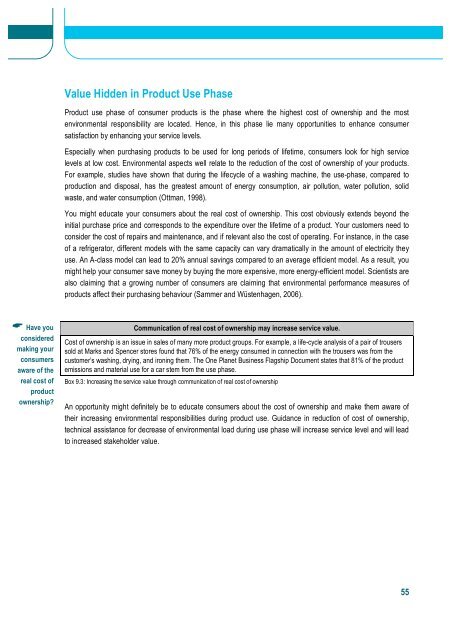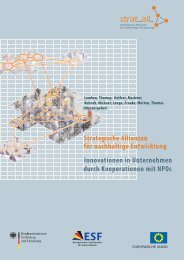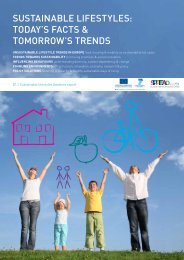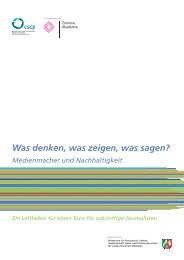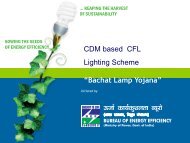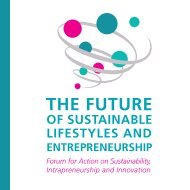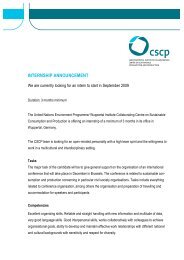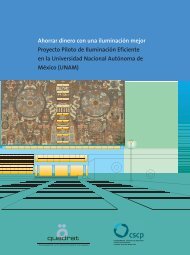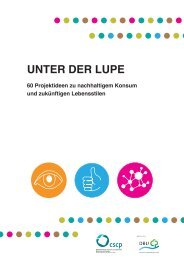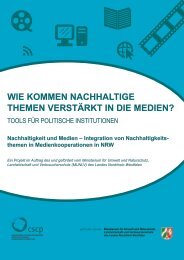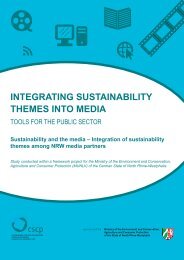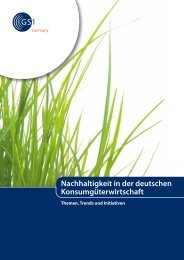Retailers Calendar
Retailers Calendar
Retailers Calendar
Create successful ePaper yourself
Turn your PDF publications into a flip-book with our unique Google optimized e-Paper software.
Value Hidden in Product Use Phase<br />
Product use phase of consumer products is the phase where the highest cost of ownership and the most<br />
environmental responsibility are located. Hence, in this phase lie many opportunities to enhance consumer<br />
satisfaction by enhancing your service levels.<br />
Especially when purchasing products to be used for long periods of lifetime, consumers look for high service<br />
levels at low cost. Environmental aspects well relate to the reduction of the cost of ownership of your products.<br />
For example, studies have shown that during the lifecycle of a washing machine, the use-phase, compared to<br />
production and disposal, has the greatest amount of energy consumption, air pollution, water pollution, solid<br />
waste, and water consumption (Ottman, 1998).<br />
You might educate your consumers about the real cost of ownership. This cost obviously extends beyond the<br />
initial purchase price and corresponds to the expenditure over the lifetime of a product. Your customers need to<br />
consider the cost of repairs and maintenance, and if relevant also the cost of operating. For instance, in the case<br />
of a refrigerator, different models with the same capacity can vary dramatically in the amount of electricity they<br />
use. An A-class model can lead to 20% annual savings compared to an average efficient model. As a result, you<br />
might help your consumer save money by buying the more expensive, more energy-efficient model. Scientists are<br />
also claiming that a growing number of consumers are claiming that environmental performance measures of<br />
products affect their purchasing behaviour (Sammer and Wüstenhagen, 2006).<br />
Have you<br />
considered<br />
making your<br />
consumers<br />
aware of the<br />
real cost of<br />
product<br />
ownership?<br />
Communication of real cost of ownership may increase service value.<br />
Cost of ownership is an issue in sales of many more product groups. For example, a life-cycle analysis of a pair of trousers<br />
sold at Marks and Spencer stores found that 76% of the energy consumed in connection with the trousers was from the<br />
customer’s washing, drying, and ironing them. The One Planet Business Flagship Document states that 81% of the product<br />
emissions and material use for a car stem from the use phase.<br />
Box 9.3: Increasing the service value through communication of real cost of ownership<br />
An opportunity might definitely be to educate consumers about the cost of ownership and make them aware of<br />
their increasing environmental responsibilities during product use. Guidance in reduction of cost of ownership,<br />
technical assistance for decrease of environmental load during use phase will increase service level and will lead<br />
to increased stakeholder value.<br />
55


